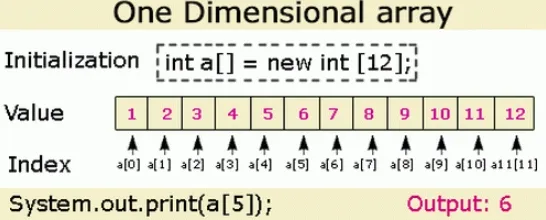是的,它只会创建引用,并将其设置为默认值null。这就是为什么您会得到NullPointerException。您需要单独创建对象并分配引用。在Java中创建数组有3个步骤:
Declaration – In this step, we specify the data type and the dimensions of the array that we are going to create. But remember, we don't mention the sizes of dimensions yet. They are left empty.
Instantiation – In this step, we create the array, or allocate memory for the array, using the new keyword. It is in this step that we mention the sizes of the array dimensions.
Initialization – The array is always initialized to the data type’s default value. But we can make our own initializations.
Declaring Arrays In Java
This is how we declare a one-dimensional array in Java –
int[] array;
int array[];
Oracle recommends that you use the former syntax for declaring arrays.
Here are some other examples of legal declarations –
int[] intArray;
double[] doubleArray;
byte byteArray[];
long longArray[];
int[][] int2DArray;
double[][] double2DArray;
byte[] byte2DArray[];
long[] long2DArray[];
And these are some examples of illegal declarations –
int[5] intArray; // Don't mention size!
double{} doubleArray; // Square Brackets please!
Instantiation
This is how we “instantiate”, or allocate memory for an array –
int[] array = new int[5];
When the JVM encounters the new keyword, it understands that it must allocate memory for something. And by specifying int[5], we mean that we want an array of ints, of size 5.
So, the JVM creates the memory and assigns the reference of the newly allocated memory to array which a “reference” of type int[]
Initialization
Using a Loop – Using a for loop to initialize elements of an array is the most common way to get the array going. There’s no need to run a for loop if you are going to assign the default value itself, because JVM does it for you.
All in One..! – We can Declare, Instantiate and Initialize our array in one go. Here’s the syntax –
int[] arr = {1, 2, 3, 4, 5};
Here, we don’t mention the size, because JVM can see that we are giving 5 values.
